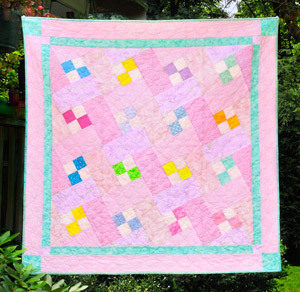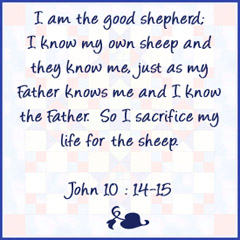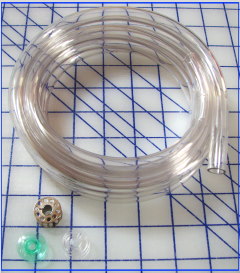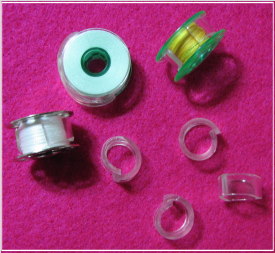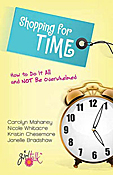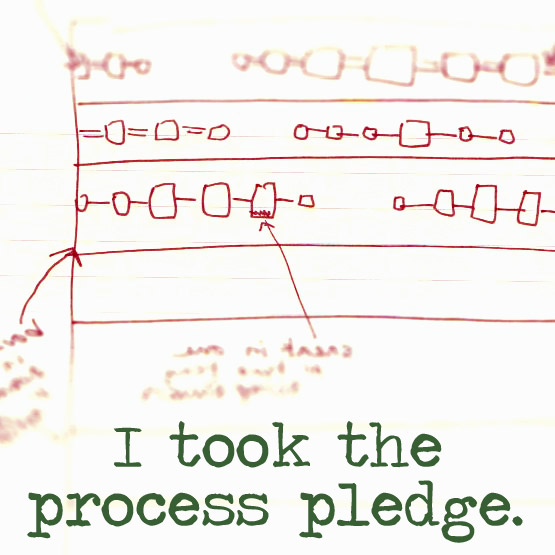
In part one of this tutorial I showed you how to create double-fold binding. Now I’m ready to apply the binding to my quilt. There are two preparatory steps that will make this process much easier.
First, I need to make two pencil marks on the batting in each corner of my quilt. These marks show me where to stop sewing and where to start sewing again as I traverse the corners. With a quilt ruler, I mark a quarter inch from the point on each side of the corner. If you prefer to mark with quilt pins, that works just as well.

Make Quarter-Inch Marks at Corners
The second preparatory step involves the 3/8” fold I made on one end of my binding. This step simplifies the problem of what to do when my binding tails meet. I fill a bobbin with fusible thread. On the wrong side of the 3/8” diagonal fold of my binding, I zig-zag stitch (3.0 length, 4.0 width) along the fold line, leaving a little space between the fold and the stitches for a few optional tack-down stitches later.

Zig-Zag Stitch with Fusible Thread

Leave a Small Space
I begin placement of the binding about 2/3 of the way down the left side of my quilt. This is important because the human eye tends toward centers. The symmetry of your quilt flows more gracefully if there are no unnecessary broken lines in these positions. (If you want to begin 1/3 of the way down, that’s just fine.)

Begin Off Center
For the method I’m using, I open my folded binding up for the first 7-8 inches and begin sewing it to the quilt with a quarter-inch seam allowance.

Open Binding for Beginning Stitches
When I’ve completed stitching for 7-8 inches, I fold the binding back and continue sewing. This forms a little pocket at the beginning of my binding.

Fold Back Binding and Continue Sewing
As I’m sewing, I like to put my roll of binding on top of the quilt itself rather than allowing it to dangle over the side of my sewing surface. The weight of the binding can add drag as you sew, which isn’t a good thing.

Roll Binding, Place On Top of Quilt
When I reach the first corner, I stop sewing at the quarter-inch marking (or pin).

Stop Sewing at First Quarter-Inch Mark
I then lift the presser foot with needle in the down position and turn my quilt so that I can stitch up to the batting. I clip my threads and remove the quilt from under the presser foot.

Stitch to Batting
I now fold my binding away from the quilt corner, forming a right angle. The binding should be even with the second edge you are about to sew.

Fold Binding Away From Quilt
Next, I fold the binding onto the quilt’s second edge. Most instructions will tell you to keep the fold even with the edge of the quilt. I actually prefer to let the fold extend about 1/16th of an inch past the edge. This tiny bit of extra fold gives me a beautiful square mitered corner that I don’t get when I keep the folded edge even. There’s a lot of stuffing in the corners that tends to add roundness. This provides the antidote.

Allow Fold to Extend 1/16 Inch
With my binding in place, I now begin stitching at the next marked quarter inch, taking a backstitch to secure the thread. I sew until I come to the next corner and repeat the above process for each remaining corner.

Begin Stitching at Second Mark
As the binding approaches the starting point, I stop sewing with the needle in the down position. I then cut the binding tail a few inches past the beginning stitches of the pocket.

Trim Binding Tail
I fold in edge of the tail, creating a diagonal fold, and then trim along the fold line. Make sure your tail extends beyond the opening of the pocket. You don’t want to come up short here. It’s easy enough to eyeball this process.

Make a Diagonal Fold

Cut Along Fold Line
Folding the pocket back over the tail, I insert a few pins to keep the intersection snug and then sew until I meet with my beginning stitches.

Tuck in Tail and Pin

Sew Until Stitches Meet
Removing the quilt from under the presser foot, I now take it to the iron and steam press the fusible thread pocket for about 6-7 seconds. I only press the binding area, not the quilt.

Press Binding Intersection
In part three, I will show you how I prepare the edges of the quilt for a successful and happy ending.
nrw
Read Full Post »

